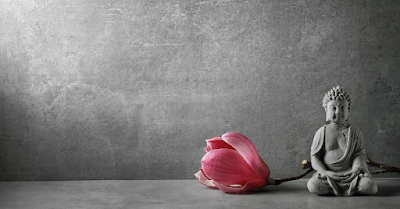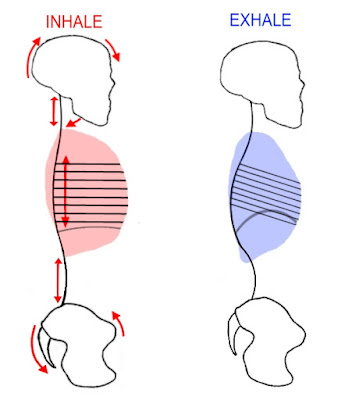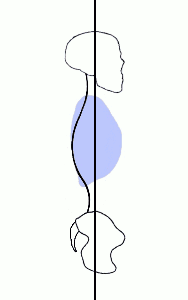Let's learn to breathe ...
What? You say, "I breathe; I know how to breathe". Well sure, if your idea of breathing is just getting air in and out your lungs.
I would not disagree. Of course you do. Breath. We each have taken our first breath. It comes with the territory. Only natural. Sometimes associated with an accompanying rude slap on the ass. On which I'm thinking a lot of our problems started right there. Some clueless expert medical type slapping a newborn's ass and leaving a whiplash as a first impression coming into this world. Then if you are born a male, having your pee-pee thing cut unceremoniously. Or, if you are of the Jewish faith, make that "ceremoniously'. Makes no difference when you are on the receiving end, either way. Or maybe you come into the world all warm and fuzzy in a warm tub with a birth doula; candles, incesne, and sweet musical sounds. Regardless, any which way, it is a shaping experience. A big subject, but for later. If you're interested look into subjects like pre-natal psychology and the formative birthing experience.
We get born. But, from then on we just go with it. We learn the 3R's, but not so much the basics; like breathing, standing, sitting, walking. Self taught mostly. We just learn by doing and take our learned habits for granted. As normal. I breathe! What more is there to it?
Lot's more. Read on ...
You breathe. Well, yes. And, also ... no. Just saying so like that that you know how to breathe so snappy and maybe a little peeved suggests there's more to learn. There's more to it than just air going in and out.
Okay. You know how to breathe. Wanna take a little test then? Yes?
Do this: Stand up straight, and take a great big breath. Do it again. Notice what happens. Did you pull your shoulders back, arch your back? If so, that's so typical. There's another way; easier, and healthier.
If you want to learn, read on. If not, go ahead, be that way.
A significant functional thing to know about the mechanics of breathing is this: on the in-breath the diaphragm muscle located just under the lungs and at the bottom of the rib cage contracts. It's a dome-shaped muscle, sort of like an umbrella shape. It's rounded, then it flattens. It gets smaller as it contracts; that makes room for air to come into the lungs.
Also, when the diaphragm contracts on the in-breath the muscles between the ribs relax. That makes room for the rib cage to expand with the inflow of air. Also, the lower back muscles should also be relaxed. That gives the diaphragm room to move and the abdominal contents also some room. And, as you'll see this also allows the rest of the body to move in train with the primary movement in the chest.
So now you may be getting a hint about how the shoulders-back-arched-back is maybe not correct in terms of the basic kinesthetics of the body design.
It's also important to know that on the in-breath the spine flattens and lengthens. The curve in the lower back flattens and gets longer. Same with the curves in the upper body, and the neck. Muscles need to be relaxed in order to get a rich, full breath. In other words, stop working to breathe.
Take some time to study this image. It shows graphically what we're talking about ...
Reminds me of the story of this guy, he's rushing into the emergency room screaming, "I can't breathe! I can't breathe! I can't breathe!". Who's gonna tell the chap that his screaming is proof that he's breathing? But, when someone is convinced of something or other, if they're not asking for a second opinion, what you gonna do? [Send them to the Psych Ward.]
So, now, what to do to get breathing right?
First, sit down on a flat seat chair. This'll work for you cross legged types; but you'd better be sure you're easy and fluid in that posture. Besides, this is a Western oriented practice we're talking about here. Western Man stands on his feet. Women too. Let's not get going on gender stuff. Males have penises, females have vaginas. Let's agree on that.
You're gonna want to move as you breathe freely; the flat chair lets you do that. Sit up nice and straight. Not rigid, but nice. Slumped in a chair restricts the breath. That's obvious.
Next, take a moment and scan your body. Start with the toes and move up all the way to the top of your head. Don't need to move anything to feel. Stop that! Just put your attention bit by bit and notice what's there; and, what's not. Let it be. [Props to John Lennon.]
So now, take a breath. Don't move your shoulders back, or arch your lower back. Simply let the air in to fill your lungs. And, don't push it! Stay comfortable. Easy does it. We're learning how to take the work out of breathing, remember?
Imagine the air filling up first into your upper body, then moving down. Exhale in the reverse: from your abdomen to the top of your lungs. That comes directly from Swami Satchidananda Saraswati, so it's good stuff from a trustworthy source. You may also try the reverse. Let the air come up from below, filling you up; then releasing the breath from top to bottom. See which fits for you. No big woop either way. The Swamiji version is good for all of us who like to spend time crouched over our smart phones and tablets. Gets the chest up, the neck straight, the head on top.

Now, spend some time doing that. Make it a meditation. Sitting easy, breathing easy. Do it long enough that you get into the rhythm. And, do yourself a big favor ... don't think. Not to stop thinking, just don't serve your thoughts any tea. As my go-to Shri Nisargadatta Maharaj puts it: "The only meditation is the rigorous refusal to harbour thoughts." Just like with the breath though, don't fight it. Why? Because I said so! And, fighting it is a thought too.
Not so fast. We're not done yet. There's more. More to tell, and way more for you to discover. Discover in the doing of it. Do it! You!
The next thing in this tutorial is to practice. Regularly. Daily. First thing in the morning, last at night. Mornings the mind is clear so the concentration is easy. Evenings the mind needs to wind down. It'll help you sleep better.
Besides the breathing exercise you'll benefit from the meditation itself. So, do it regularly ... daily. Maybe even stop some times during your day and take a breath break. A minute or so will do. And, take as much time as you like. Believe me, once you get into the practice things start to unfold; you'll see. You'll like it.
Wait! There's more ...
So now you've settled into spending some quiet time just sitting there and following your breath. That's the next step ... follow your breath. See where it goes, where it doesn't. Don't push it! Just notice what's so.
Notice how on the in-breath the spine lengthens. The lumbars [lower back] and cervical vertebrae [neck] flatten/lengthen. Notice also how as the in-breath moves the spine to elongate, that action moves the hips back ever so slightly. If you don't get that right away, try rocking your hips back on the in-breath just a little bit. On the out-breath the hips rock forward. Get into that dance. Your mojo will thank you.
And still ... more. Now that you got your spine twerking nicely with your pelvis, also notice that movement in the hips translates into your legs, and then into your feet. In-breathing you'll feel your legs engage with the movement. Then, down to your feet. pushing into the floor.
Feet-wise ...
The foot has three arches. The large inner arch. A much shallower one on the outside of the foot. And the third across the balls of your feet. Those toes, let them be at ease. Get squarely into the triangular base of the feet.
Now notice if there are any differences, side to side; foot to foot. Even it out. Gently. No pushing, please. You can take that exercise up through the entire body all the way to the head. You know, the brain has two sides; why not balance them while you're at it?
Healing Breath ...
You may notice there are places where the breath doesn't go, or the movement of the breath brings up/reveals or touches upon some pain. Good news! Let your breath gently go into new places. Your body is a temple; get to know the building. Good read: Saint Teresa of Avila, The Interior Castle and the Seven Mansions each with many rooms.
Let your breath touch your pain, but ever so gently. Be patient. Works with stress too. Give it a go. In short order you'll see how the breath itself opens things up. Clears things too. Effortlessly. With an effortless breath.
That's about it. Try it. Stick with it. Your breath is your teacher. Listen to it. Follow it.


















































